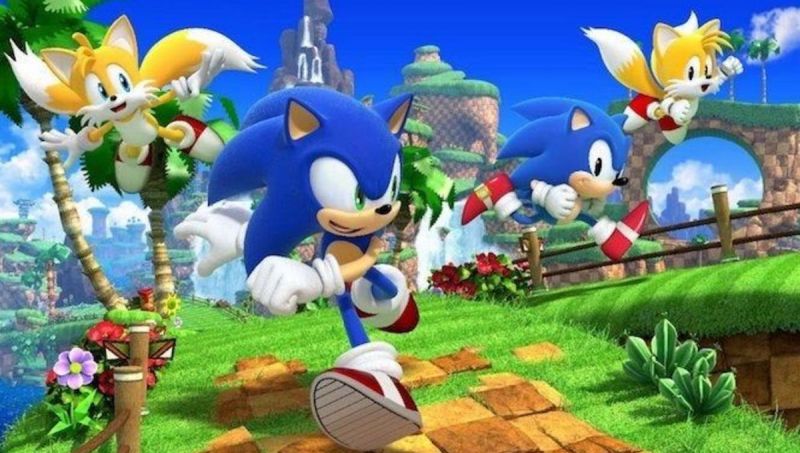Advertisement
Popular Now
The Birth of Sonic the Hedgehog™ Classic: A New Era in Gaming
In 1991, SEGA introduced Sonic the Hedgehog™, a game designed to compete with Nintendo’s Super Mario series. The platformer focused on speed, with players guiding Sonic through vibrant, colorful levels filled with loops and obstacles. Unlike many other games at the time, Sonic the Hedgehog™ Classic placed an emphasis on fluid, fast-paced gameplay that was a refreshing contrast to slower, more methodical platformers. Sonic's design was revolutionary in its simplicity and appeal. His vibrant blue appearance, which was inspired by SEGA’s blue logo, became instantly recognizable. Sonic’s spiky hair and attitude gave him an edge that distinguished him from other gaming characters. The game’s success on the SEGA Genesis solidified Sonic as a cultural phenomenon.Expanding Beyond the Games: Sonic’s Merchandise and Media Appearances
 By the mid-90s, Sonic the Hedgehog™ Classic had expanded beyond video games. SEGA capitalized on Sonic's growing popularity by creating merchandise, including action figures, clothing, and even lunchboxes. Sonic also starred in his own animated series, bringing the character to a broader audience.
The original TV show, The Adventures of Sonic the Hedgehog, introduced fans to new characters, like the lovable yet eccentric sidekick, Knuckles the Echidna. As Sonic's universe expanded, his media presence continued to grow, solidifying his place as a pop culture icon.
By the mid-90s, Sonic the Hedgehog™ Classic had expanded beyond video games. SEGA capitalized on Sonic's growing popularity by creating merchandise, including action figures, clothing, and even lunchboxes. Sonic also starred in his own animated series, bringing the character to a broader audience.
The original TV show, The Adventures of Sonic the Hedgehog, introduced fans to new characters, like the lovable yet eccentric sidekick, Knuckles the Echidna. As Sonic's universe expanded, his media presence continued to grow, solidifying his place as a pop culture icon.
Sonic’s Shifting Legacy: The Decline of SEGA and the Franchise's Survival
SEGA’s decline as a console maker in the early 2000s had a profound impact on Sonic. The company ceased producing consoles after the Dreamcast, and Sonic was no longer exclusive to SEGA hardware. This shift led to Sonic’s transition to various platforms, including Nintendo, PlayStation, and Xbox, as SEGA continued to focus on game development rather than hardware. Despite this setback, Sonic continued to thrive as a multi-platform icon. Games like Sonic Heroes and Sonic Unleashed allowed Sonic to remain relevant in the face of competition from other franchises, including Mario and newer titles like Halo. The speed and thrill that defined the original games were still present, even if the series had to adapt to new consoles and technologies.New Adventures: Sonic’s 2D Resurgence
 In the late 2000s, fans of the original Sonic the Hedgehog™ Classic games found a reason to celebrate with the release of Sonic the Hedgehog 4. This game returned to the 2D roots of the franchise, offering a nostalgic experience for long-time fans. It captured the fast-paced, side-scrolling action of the original games while incorporating modern visual updates.
Sonic the Hedgehog 4 was well-received by fans who were eager for a return to Sonic’s roots. The game's success also led to the creation of subsequent 2D Sonic titles, including Sonic Generations, which combined the best of both 2D and 3D gameplay to create a dynamic experience that appealed to a wide range of players.
In the late 2000s, fans of the original Sonic the Hedgehog™ Classic games found a reason to celebrate with the release of Sonic the Hedgehog 4. This game returned to the 2D roots of the franchise, offering a nostalgic experience for long-time fans. It captured the fast-paced, side-scrolling action of the original games while incorporating modern visual updates.
Sonic the Hedgehog 4 was well-received by fans who were eager for a return to Sonic’s roots. The game's success also led to the creation of subsequent 2D Sonic titles, including Sonic Generations, which combined the best of both 2D and 3D gameplay to create a dynamic experience that appealed to a wide range of players.
Sonic’s Continued Evolution in the Modern Era
As technology advanced, so did the Sonic franchise. Titles like Sonic Forces and Sonic Mania brought new innovations to the series. While Sonic Forces experimented with character customization and online elements, Sonic Mania returned to the classic formula, showcasing the true essence of Sonic’s speed and platforming prowess. The franchise also adapted to new trends, including the rise of mobile gaming. Sonic Dash, a popular endless runner game, brought Sonic's thrilling gameplay to smartphones, attracting a new generation of players.Highlights of Modern Sonic Games:
- Sonic Forces: Featuring customizable characters and new gameplay mechanics.
- Sonic Mania: A return to the classic 2D platformer roots with updated graphics and level design.
- Sonic Dash: A popular mobile game that made Sonic’s speed accessible to a wide audience.























